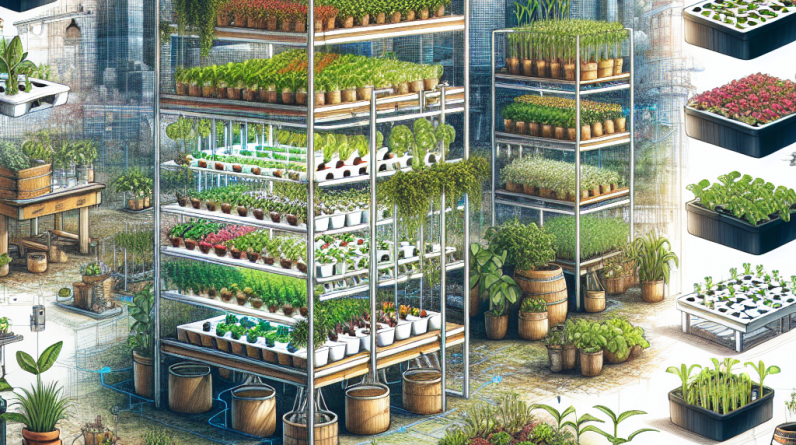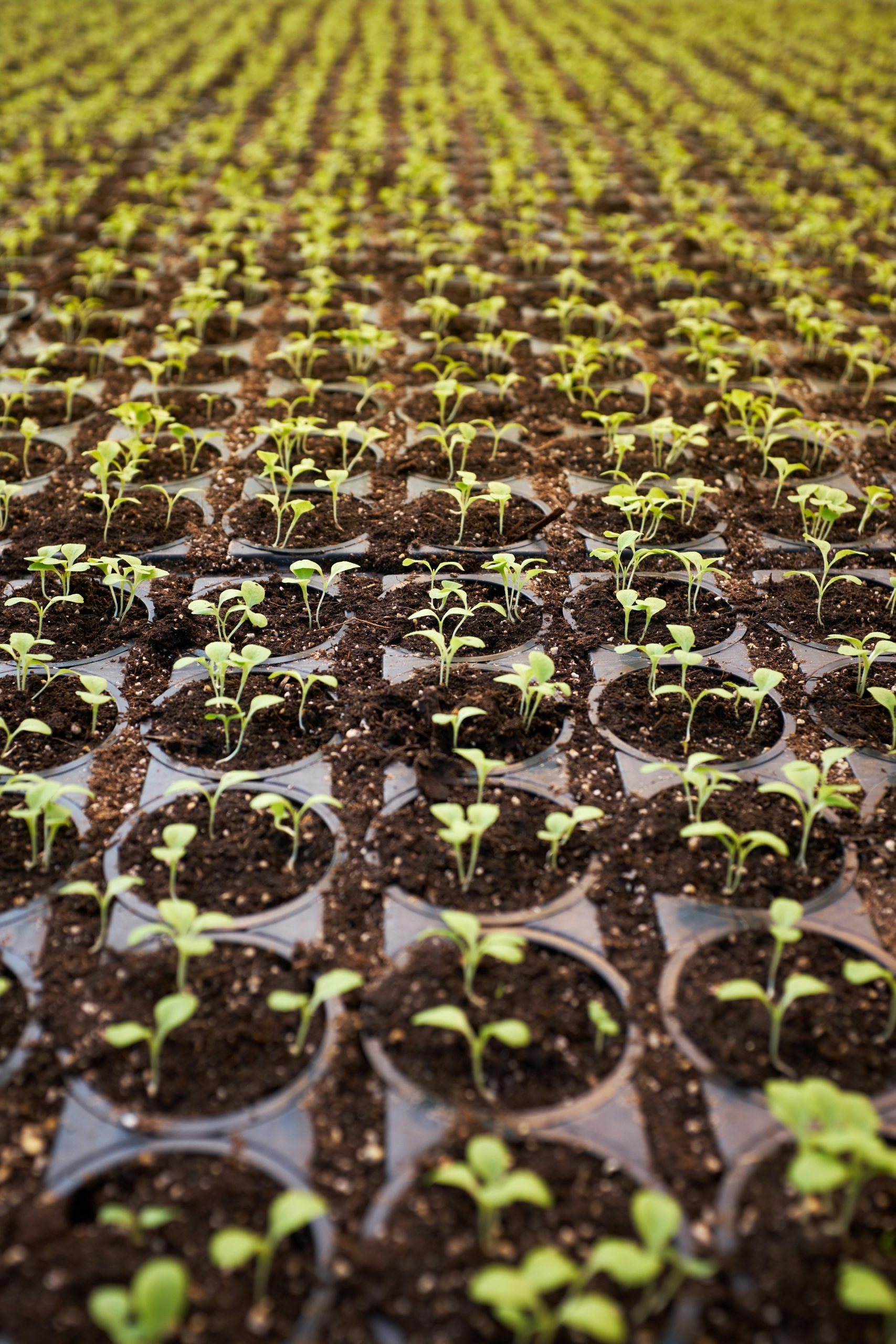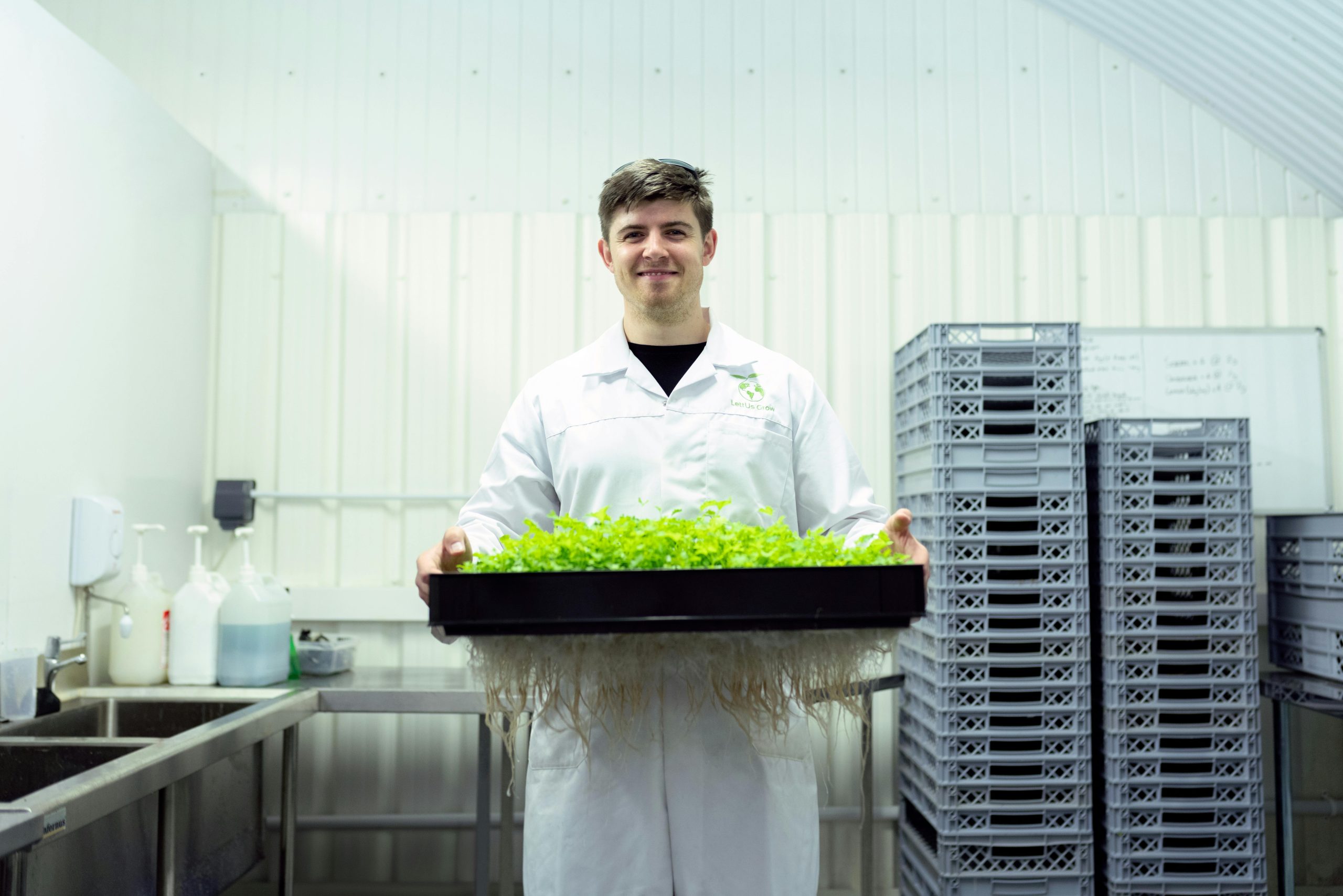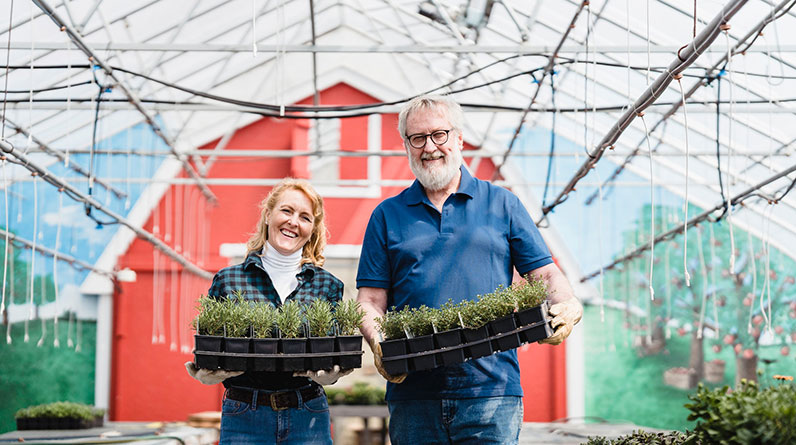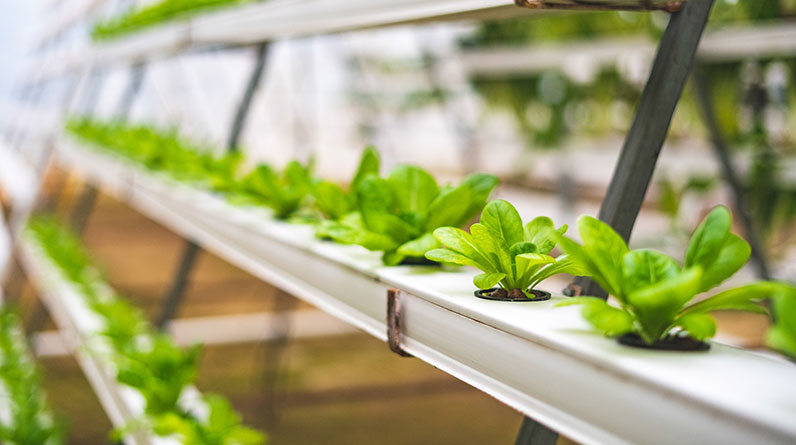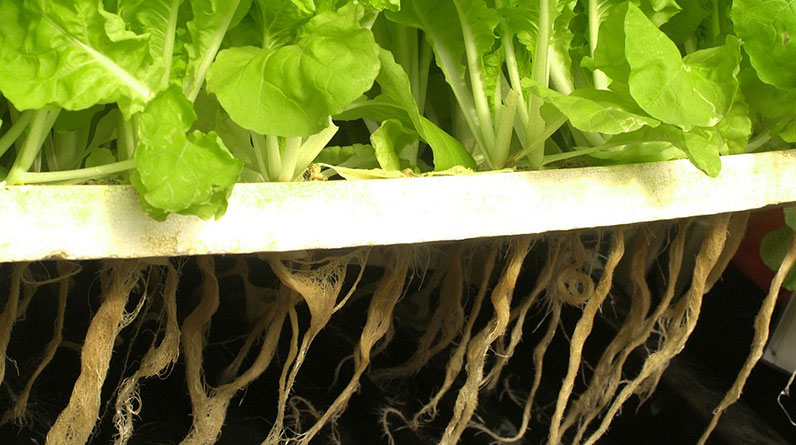
Hydroponic farming system is a revolutionary way of growing plants without soil. This innovative technique has been gaining popularity in recent years, and for good reason. With hydroponics, farmers can grow crops in a controlled environment, free from pests, diseases, and weather conditions. This method of farming is also more efficient than traditional agriculture, using less water and fertilizers while producing higher yields.
One of the main advantages of hydroponic farming is its versatility. It can be used to grow a wide range of crops, from lettuce and herbs to tomatoes and strawberries. This makes it an ideal solution for urban farming, where space is limited, and traditional farming methods are not feasible.
Another benefit of hydroponics is its sustainability. By using less water and fertilizers, it reduces the environmental impact of agriculture. Additionally, hydroponic farms can be located closer to urban areas, reducing the carbon footprint of transportation.
Hydroponic farming also offers economic benefits. With higher yields and lower production costs, farmers can sell their crops at a competitive price while still turning a profit. This can be especially beneficial for small-scale farmers who may struggle to compete with larger, traditional farms.
In conclusion, hydroponic farming system is a game-changer for agriculture. Its versatility, sustainability, and economic benefits make it an attractive option for farmers and consumers alike. As we continue to face challenges in food production, hydroponics offers a promising solution for a more sustainable and efficient future.
What Is Hydroponic Farming?
Hydroponic farming is a method of growing plants without soil. Instead, plants are grown in a nutrient-rich solution that is delivered directly to their roots. This method of farming has become increasingly popular in recent years due to its many benefits.
One of the main advantages of hydroponic farming is that it allows for year-round crop production. Because plants are grown indoors in a controlled environment, they are not subject to the same seasonal limitations as traditional outdoor farming. This means that farmers can produce crops all year long, regardless of the weather outside.
Another benefit of hydroponic farming is that it requires less water than traditional farming methods. This is because the nutrient-rich solution used in hydroponics is recycled and reused, rather than being lost to evaporation or runoff. Additionally, hydroponic systems can be designed to use less water than traditional farming methods, making them more environmentally friendly.
Hydroponic farming also allows for greater control over plant growth. Because the nutrient solution is delivered directly to the plant’s roots, farmers can easily control the amount of nutrients and water that each plant receives. This means that plants can be grown to the exact size and shape desired, resulting in higher yields and better quality crops.
Overall, hydroponic farming is a highly efficient and sustainable method of growing plants. With its many benefits, it is no wonder that this method of farming is becoming increasingly popular around the world.
Benefits of Hydroponic Farming
Hydroponic farming is an innovative method of growing plants without soil. Instead, plants are grown in nutrient-rich water solutions, allowing them to thrive in a controlled environment. This farming system offers numerous benefits that traditional soil-based farming cannot match.
One of the main advantages of hydroponic farming is that it saves water. Since the plants receive only the necessary amount of water, there is no wastage, and the system uses up to 90% less water than soil-based farming. Additionally, hydroponic farming requires less space, making it ideal for urban areas where land is scarce.
Another benefit of hydroponic farming is that it eliminates the need for pesticides and herbicides. Since the plants are grown in a controlled environment, pests and diseases are less likely to occur. This means that the crops are healthier and safer for consumption.
Hydroponic farming also allows for faster growth and higher yields. The plants receive all the necessary nutrients directly from the water, resulting in faster growth and larger yields. This means that farmers can produce more crops in a shorter amount of time, increasing their profits.
Furthermore, hydroponic farming is more sustainable than traditional farming methods. It reduces the carbon footprint by eliminating the need for transportation of crops and reducing water usage. Additionally, hydroponic farming can be done year-round, providing a consistent supply of fresh produce.
In conclusion, hydroponic farming offers numerous benefits that make it a viable alternative to traditional soil-based farming. From saving water and space to eliminating the need for pesticides and herbicides, this farming method is more sustainable and efficient. As the world’s population continues to grow, hydroponic farming may become an essential part of our food production system.
Types of Hydroponic Systems
When it comes to hydroponic farming systems, there are several different types to choose from. Each system has its own unique benefits and drawbacks, so it’s important to consider your needs and preferences before deciding which one to use. In this article, we’ll take a closer look at some of the most popular types of hydroponic systems.
The first type of hydroponic system is the deep water culture system. This system is simple and easy to set up, making it a popular choice for beginners. In a deep water culture system, plants are suspended in a nutrient-rich solution, with their roots submerged in the water. The downside of this system is that it can be difficult to maintain proper oxygen levels in the water.
Another popular type of hydroponic system is the ebb and flow system. This system uses a timer to flood the plant roots with nutrient-rich water, then drains the water back into a reservoir. This cycle is repeated several times a day, providing plants with a steady supply of nutrients and oxygen. The downside of this system is that it can be more complex to set up and maintain than other systems.
Drip irrigation systems are another popular choice for hydroponic farming. In this system, nutrient-rich water is dripped onto the plants from above, providing them with a steady supply of nutrients. Drip irrigation systems are easy to set up and maintain, but they can be more expensive than other systems.
Finally, there’s the aeroponic system, which uses misters to deliver nutrient-rich water to the roots of the plants. This system is highly efficient and can produce impressive yields, but it can also be more complex and expensive to set up.
In conclusion, there are several different types of hydroponic systems to choose from, each with its own unique benefits and drawbacks. By considering your needs and preferences, you can choose the system that’s right for you.
What Plants Can Be Grown Hydroponically?
Hydroponic farming systems have gained popularity in recent years due to their ability to produce high yields of crops with minimal space and resources. This innovative method of agriculture involves growing plants without soil, using nutrient-rich water instead. But what plants can be grown hydroponically?
The answer is almost any plant! Hydroponic systems can accommodate a wide variety of plants, including leafy greens, herbs, fruits, and vegetables. Some of the most popular plants grown hydroponically include tomatoes, lettuce, strawberries, and peppers.
Leafy greens, such as spinach and kale, are also great candidates for hydroponic farming. They grow quickly and can be harvested multiple times, making them an efficient choice for farmers. Herbs like basil, mint, and parsley are also commonly grown hydroponically, as they require consistent moisture and nutrient levels.
Fruit-bearing plants like strawberries, blueberries, and raspberries can also be grown hydroponically, but they require more attention and care than other plants. Proper pruning and pollination are necessary for a successful harvest.
In addition to traditional crops, hydroponic systems can also be used to grow exotic and high-value crops, such as saffron and vanilla. These crops require specific growing conditions, which can be easily controlled in a hydroponic environment.
Overall, hydroponic farming systems offer a versatile and efficient way to grow a wide range of crops. With proper care and attention, almost any plant can thrive in a hydroponic system. So whether you’re a home gardener or a commercial farmer, consider trying hydroponic farming for your next crop.
How Does Hydroponic Farming Save Water?
Hydroponic farming is an innovative and sustainable method of growing plants without soil. Instead of using soil, plants are grown in nutrient-rich water, which is circulated through the roots. This method of farming is gaining popularity due to its numerous benefits, including water conservation.
One of the main advantages of hydroponic farming is that it uses significantly less water than traditional farming methods. In conventional agriculture, a large amount of water is wasted due to evaporation, runoff, and absorption by the soil. However, in hydroponic farming, water is recirculated, which means that very little is lost. Additionally, the water used in hydroponic farming is enriched with nutrients, which means that plants can grow faster and healthier with less water.
Another way that hydroponic farming saves water is by reducing the need for irrigation. In traditional farming, crops are often over-watered to compensate for uneven distribution of water in the soil. This results in water waste and can lead to soil erosion. However, in hydroponic farming, water is delivered directly to the roots, which ensures that each plant receives the same amount of water. This not only saves water but also reduces the risk of soil erosion.
Hydroponic farming also reduces water waste by eliminating the need for pesticides and herbicides. In traditional farming, these chemicals are often applied in large quantities, which can contaminate groundwater and soil. However, in hydroponic farming, plants are grown in a controlled environment, which means that pests and weeds can be controlled without the use of harmful chemicals.
In conclusion, hydroponic farming is an excellent way to conserve water and promote sustainable agriculture. By using nutrient-rich water, recirculating water, reducing irrigation, and eliminating the need for harmful chemicals, hydroponic farming is a viable solution to the water crisis facing our planet.
What Are the Disadvantages of Hydroponic Farming?
Hydroponic farming is gaining popularity as a sustainable and efficient way of growing crops. However, like any other farming method, it has its share of disadvantages. In this article, we will discuss some of the drawbacks of hydroponic farming.
One of the biggest disadvantages of hydroponic farming is the initial cost. Setting up a hydroponic system requires a significant investment in equipment, such as pumps, tanks, and lighting. Moreover, the cost of maintaining the system can be high, as it requires regular monitoring, cleaning, and nutrient replenishment.
Another disadvantage of hydroponic farming is the risk of system failure. If the system fails, crops can die quickly, leading to significant losses. This risk can be mitigated by regular maintenance and monitoring, but it is still a concern.
Hydroponic farming also requires a high level of technical knowledge and expertise. Farmers need to understand the science behind the system, such as pH levels, nutrient ratios, and lighting requirements. This can be a steep learning curve for beginners and can lead to mistakes that can harm crops.
Additionally, hydroponic farming is heavily reliant on electricity. The lighting and pumps required to maintain the system use a significant amount of energy, which can be costly and environmentally unsustainable.
In conclusion, while hydroponic farming has many advantages, it also has its share of disadvantages. These include the initial cost, the risk of system failure, the need for technical expertise, and the reliance on electricity. Despite these drawbacks, hydroponic farming remains a promising method of sustainable agriculture.
How Do You Maintain a Hydroponic System?
Maintaining a hydroponic system is crucial to ensure that your plants grow healthy and strong. Here are some tips to keep your hydroponic system in top condition.
Firstly, monitor the pH level of your nutrient solution regularly. The ideal pH range for hydroponic systems is between 5.5 and 6.5. If the pH level is too high or too low, it can affect the plant’s ability to absorb nutrients, leading to stunted growth or even death.
Secondly, check the nutrient solution’s temperature regularly. The ideal temperature range for hydroponic systems is between 65 and 75 degrees Fahrenheit. If the temperature is too high or too low, it can affect the plant’s growth and cause root rot.
Thirdly, inspect the roots of your plants regularly. If you notice any signs of discoloration or root rot, it’s time to take action. Remove any affected roots and replace the nutrient solution.
Fourthly, clean your hydroponic system regularly. Remove any debris or dead plant matter from the system. This will prevent the growth of harmful bacteria and fungi that can harm your plants.
Lastly, ensure that your hydroponic system is properly ventilated. Good air circulation is essential for healthy plant growth. Use fans or air pumps to circulate the air in your grow room.
By following these tips, you can maintain a healthy and thriving hydroponic system. Remember to monitor your system regularly and take action promptly if you notice any issues. Happy growing!
Is Hydroponic Farming Sustainable?
Hydroponic farming is a method of growing plants without soil, using nutrient-rich water instead. This system has been gaining popularity in recent years due to its potential to produce high yields of crops in a smaller space, using less water and fewer pesticides than traditional farming methods. But is hydroponic farming sustainable?
One of the main benefits of hydroponic farming is its water efficiency. Traditional farming methods can use up to 70% of the world’s freshwater resources, but hydroponic farming can use up to 90% less water. This makes it an attractive option for areas with limited water resources or where drought is a concern.
Another advantage of hydroponic farming is its ability to produce crops year-round, regardless of weather conditions. This means that farmers can produce a steady supply of fresh produce, even during the winter months when traditional farming is not possible.
Hydroponic farming also has the potential to reduce the use of pesticides and herbicides, as plants are grown in a controlled environment and pests can be managed more effectively. This can lead to healthier crops and a safer food supply.
However, there are also some challenges to hydroponic farming. The initial cost of setting up a hydroponic system can be high, and ongoing maintenance can also be expensive. There is also a risk of disease or contamination if the system is not properly managed.
Despite these challenges, hydroponic farming has the potential to be a sustainable and efficient way to produce crops. As technology continues to improve and costs come down, it is likely that we will see more and more hydroponic farms in the future.
In conclusion, hydroponic farming systems offer a sustainable and efficient way to grow plants without soil. This post has covered a range of topics related to hydroponic farming, including the benefits, types of systems, suitable plants, water conservation, disadvantages, maintenance, and sustainability.
One of the key benefits of hydroponic farming is the ability to grow plants in a controlled environment with less water usage than traditional farming methods. Additionally, hydroponic systems can be used to grow a wide variety of plants, from leafy greens to fruiting crops.
However, there are also some disadvantages to consider, such as the initial cost of setting up a system and the need for regular maintenance and monitoring. Despite these challenges, with proper care and attention, hydroponic farming can be a sustainable and cost-effective way to grow plants.
To maintain a hydroponic system, it’s important to regularly monitor the pH levels, nutrient levels, and water quality. Additionally, it’s important to keep the system clean and free of pests and diseases.
Looking towards the future, there are many exciting developments and trends in hydroponic farming, such as the use of vertical farming and automation technologies. As the world’s population continues to grow, hydroponic farming may play an increasingly important role in meeting the demand for fresh produce.
Thank you for reading this post on hydroponic farming systems. We hope you found it informative and useful. If you have any comments or feedback, please feel free to leave them below.


